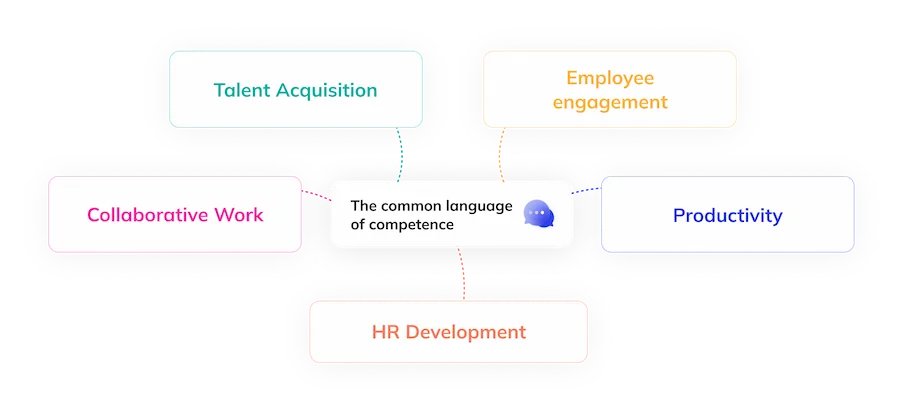Though strategic skills Planning is often viewed as challenging, it’s a critical process. With a solid methodology, it transforms into a significant opportunity for skill management policies, offering a comprehensive company overview and insights into skill evolution
Strategic Skills Plannning
According to our barometer conducted with Actance in November 2023, 64% of companies are increasingly involved into workforce planning. This forward-looking management can lead to more innovation in the management of the company’s assets, improving the detection and development of the organization’s talents. Finally, it enables informed decisions and alignment with the company’s strategic priorities. The obligation to maintain and grow the employability of employees consists of 7 steps that will be developped below:
If you want to go further on the subject of developing employability, we recommend the article“Tips for developing employability“.
Focus on skills and not on jobs
A strong trend is emerging to focus on breaking down the business into skills to better plan resource requirements. David Green discusses this trend with Ravin Jesuthasan, global leader of Mercer’s Transformation Services business and John Boudreau, in an interview we recommend.
The best return on investment in talent comes from redesigning jobs. By moving away from the single relationship an employee has with his or her job to a multi-project approach based on the whole skills of an individual. Gpec can also include this organizational dimension and adapt to the realities of the Future of Work.
We are convinced of the central dimension of skill in the operational implementation of the Strategic Workforce Planning. The skill is a common language throughout the company.
Focus workforce anticipation on skills planning
The process Strategic Workforce Planning is based on communication with different interlocutors, who are the different actors of the skill ?
- The HR Team, pilot of the project
- The General Management
- Managers, Business Unit leaders
- Trade Experts
- The collaborators
- The Staff Representative Bodies, and sometimes the unions
HR departments must jointly discuss the Strategic Workforce Planning with the various departments (finance) and executives. There has been a lot of research into why organizations fail to maintain and integrate workforce planning processes. One of the main factors identified is the quality of communication between the different functions of the organization, such as Finance, HR, or IT.
Getting stakeholder buy-in requires some form of education on why they are being consulted and what the end result will be. Ultimately, HR’s primary role is to bring the right people to the workforce planning table and facilitate the right conversations to break the ice, foster better collaboration and knowledge sharing. This will then allow you to maintain an ongoing dialogue between HR and the business.
Integrate external data into your management approach skills
making sure to take into account data external to the company is a complementary element of the good adaptation of the management policy of skills. For example, comparing the changes in skills in your sector of activity with your own assets will highlight the likely gaps that need to be filled. Various perspective studies are carried out within job observatories , for example; they form a basis to be completed with solutions involving artificial intelligence. It is now possible, thanks to the semantic analysis of large volumes of data, to highlight emerging trends in skills . We have highlighted this in the banking sector. What new soft and hard skills are emerging in the banking sector?
- skills soft skills: “Communicating with impact” and “Cooperating transversally”.
- skills techniques: “data analysis” and “python and sql programming
We detail the anticipation process of skills in our page“Build and animate your Strategic Workforce Planning“.
Strategic skills planning: what you need to know!
To conclude, we can say that forward-looking employment management skills represents an important opportunity not only for the HR function but also for the company as an entity. Organizations that effectively “do” job and career planning Strategic Workforce Planning Organizations that effectively “do” job and talent management have an average of 10% better results (as measured by revenue per employee, return on equity or profit). As an HR manager, consider your job planning process skills as a lever for :
- Enable better collaboration between functions
- Planning mobilities through skills
- Mobilize talent with more visible career management
The Strategic Workforce Planning is one of the best levers to adapt skills, read the Complete Guide to“Managing skills“.








